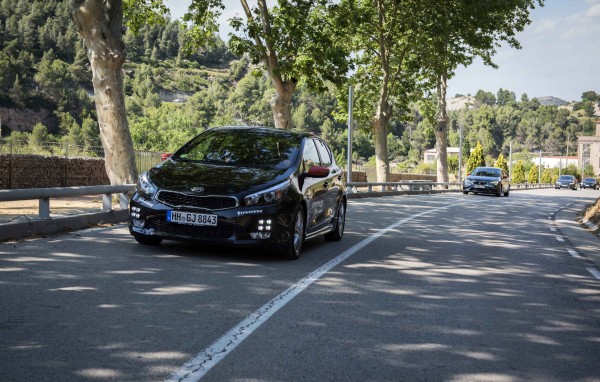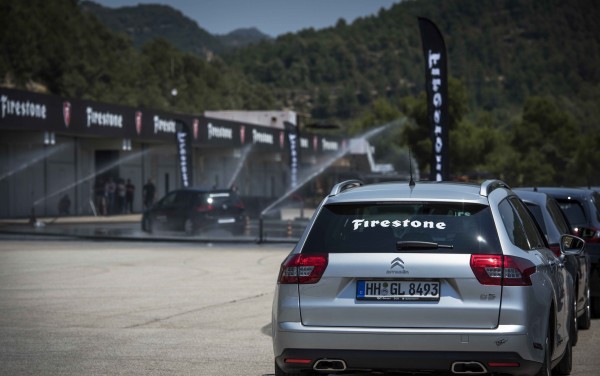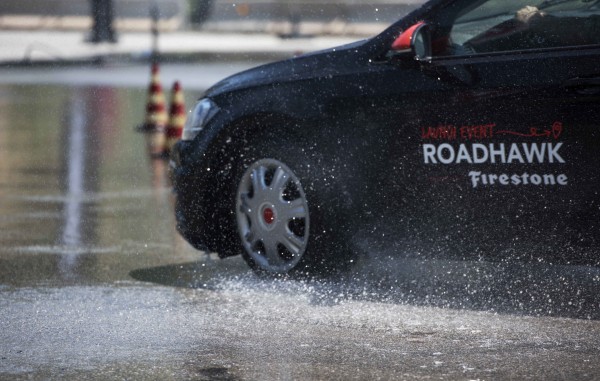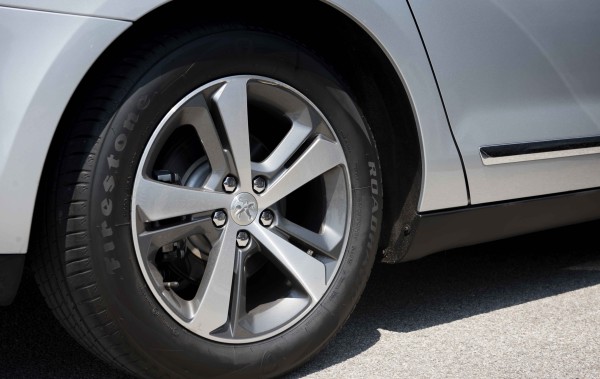Testing Firestone’s latest tyre in Barcelona
Firestone has released an all-new tyre called Roadhawk. Jack Evans headed to Barcelona to put it through its paces.

The Firestone Roadhawk is the firm’s latest touring tyre, and is designed to offer best-in-class wet grip and dry braking over longer durations. We headed to Barcelona to put the tyre through a series of tests to see if it could live up to these claims.
We’d firstly be testing out the tyre’s dry braking ability, taking to a straight section of the track at Barcelona’s Parc Moto. Here, we’d be able to see how well the Roadhawk did in standard driving conditions, braking from around 65mph to a dead stop in a diesel Volkswagen Golf – the type of vehicle that would typically be fitted with tyres like these.

Accelerating up to 65mph, we then had to brake hard between two cones, with the aim of engaging the ABS system. The tyres felt planted throughout the deceleration process, and were bringing the car to a stop in 38.4 metres, at least two metres shorter than the competitor tyres we also tested.
Up next was a wet cornering test. There had been a mock ‘roundabout’ created for us, and it was being constantly soaked by water jets. This test was designed to showcase the tyre’s grip in damp conditions, similar to those that occur frequently in the UK. The tyres fitted to our test car had also been worn down by 20,000 kilometres to provide a more realistic test.

Increasing the speed while driving in a circle, it was easy to see where the limitations of the tyre started to creep in. Go too fast, and the tyre would start to scrub wide as it struggled to find adhesion. That said, the Roadhawk did remarkably well, and provided better grip than the competitor tyre that we tested, which was far more prone to understeer.
Our final test was to provide a simulation for an occurrence which causes countless accidents on UK roads each year. A long, sweeping section of the track had been made wet, with a smaller section given even more water to replicate a large puddle in the centre of the road. Designed to put the cars into an aquaplane situation, the test would really prove whether or not the Roadhawk could deal with poor weather situations.

Similar to the first test, we accelerated up to around 65mph, approaching the corner with just a small amount of steering lock applied. The car began to feel unsettled as it hit the wet surface, before becoming noticeably light as it hit the deeper section of water. Continuing left, it became harder to adjust the car’s angle – and we came close to hitting the cones framing the exit area.
We then did the same test with a competitor tyre. With this fitted there was a marked difference, and the car became noticeably unrulier when compared to the Firestone. Granted, the entrance speed to the corner may have been a few miles per hour faster, but it wasn’t high enough to warrant the complete change in steering characteristics that we encountered.

Our test of the new Firestone Roadhawk had been thorough, helped by some pretty realistic driving situations. It goes to show that good tyres really do make the difference, especially in poor conditions.





